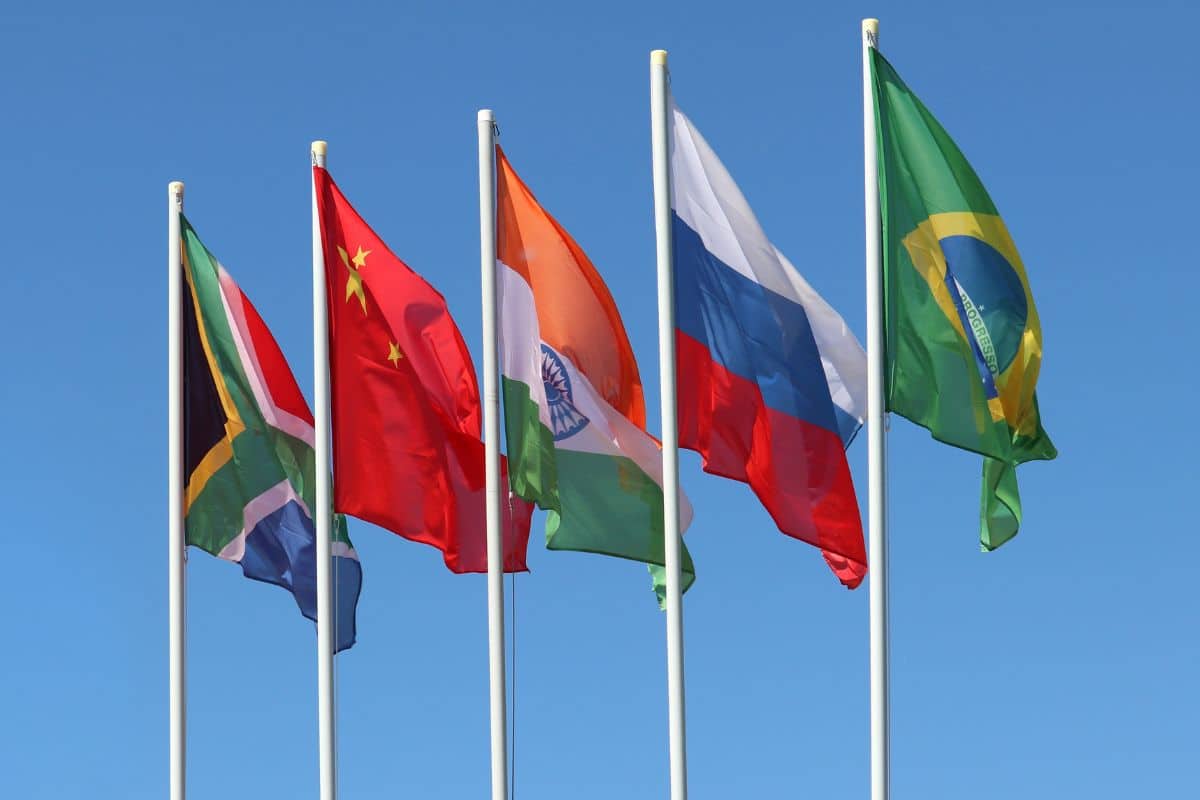The United Arab Emirates (UAE), Kingdom of Saudi Arabia, and Egypt among six other countries were invited to join the BRICS economic group on Thursday but what is BRICS and what is its purpose?
BRICS is an acronym that stands for an influential group of countries – Brazil, Russia, India, China, and South Africa – that have come together to form a strategic partnership.
Here is all you need to know about this economic group consisting most of the world’s major economies, its significance on the global stage, and its areas of cooperation.
What is BRICS?
A coalition of economic giants, initiated by Russia, BRICS is an informal group of states currently comprising of Brazil, Russia, India, China and South Africa which is now set to expand following the invitation to six other nations including the UAE and Saudi Arabia.
The BRICS 2023 summit was held in Johannesburg, South Africa.
The three-day summit, was dominated by discussions on expanding the bloc, and a decision was finally reached on Thursday morning with an announcement from South African President, Cyril Ramaphosa.
The new membership will be effective from January 1, 2024.
The summit is a collective made up of five emerging economies, each possessing substantial economic and geopolitical weight.
The first meeting of the group was held in 2006 at the proposal of Russian President Vladimir Putin with partakers including foreign ministers of Russia, Brazil and China and the Indian Defence Minister.

BRICS countries are described as one of the main driving forces of global economic development attributed to their vast population and abundance of natural resources.
BRICS operates through various cooperation formats and mechanisms. This includes annual summits hosted by member countries, leaders’ meetings on the sidelines of other major summits such as the G20, and engagements among high representatives responsible for different sectors. The working cooperation groups cover fields like agriculture, healthcare, information security, science, innovation, and more.
In essence, BRICS was founded to foster economic growth, enhance geopolitical influence, and collectively address shared global challenges, ultimately positioning its member countries as significant players in shaping the course of the 21st-century world.
Economic power and population dynamics
In 2013, BRICS accounted for a staggering 27 percent of the global Gross Domestic Product (GDP) when measured in terms of the purchasing power parity of their national currencies. This economic might is further bolstered by the combined population of these countries, which constitutes 42 percent of the entire global population. Covering 26 percent of the Earth’s land, the collective footprint of BRICS extends across diverse regions.
Global participation and influence
The BRICS nations are key players in international organisations and groups such as the United Nations, the G20, the Non-Aligned Movement, and the Group of 77. These countries are also involved in various regional associations.

What is their foundation?
The relationships between BRICS partners are founded upon principles outlined in the United Nations Charter and international law norms. These principles include openness, pragmatism, solidarity, non-bloc nature, and neutrality towards third parties. These shared values serve as the bedrock for their cooperation.
What is their goal?
According to a document that described the goals of the group, it aims “to promote dialogue and cooperation among our countries in an incremental, proactive, pragmatic, open and transparent way. The dialogue and cooperation of the BRIC countries is conducive not only to serving common interests of emerging market economies and developing countries, but also to building a harmonious world of lasting peace and common prosperity.”
Establishment of economic institutions
A significant outcome of BRICS cooperation is the establishment of the New Development Bank and the BRICS Contingent Reserve Arrangement. These financial institutions possess a combined capital of $200 billion, providing member countries with resources to tackle economic challenges collectively.
Presidential rotations and collective decision-making
The presidency rotates among member countries, allowing each nation to steer the group’s agenda during its tenure. Summits during these presidencies result in declarations and agreements on critical issues. The eighth summit, held in India, focused on forming inclusive and collective decisions and highlighted sectors such as energy, trade, agriculture, health, and more.









